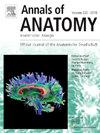中欧解剖机构当代防腐规程的聚类分析:减少化学接触的合作努力。
IF 2
3区 医学
Q2 ANATOMY & MORPHOLOGY
引用次数: 0
摘要
本文章由计算机程序翻译,如有差异,请以英文原文为准。
Cluster analyses of contemporary embalming protocols in central European anatomy institutions: A collaborative effort to minimize chemical exposure
Background
Anatomical embalming forms a mainstay in the provision of teaching materials based on human post-mortem tissues. As a consequence of regulations worldwide to minimize the use of formaldehyde due to its harmful nature, effective measures must be taken to minimize its application in the anatomy laboratory. This study aimed to identify commonalities among embalming protocols used in Austrian, German and Swiss anatomies to reduce formaldehyde usage and provide a foundation for joint accreditation.
Methods
Survey data on all procedures, technologies and chemicals related to embalming were collected from 28 participating institutions and analyzed using an automated clustering approach. Special attention was given to chemicals, explosion-proof facilities, and air ventilation technology. After conducting principal component analyses, the data was evaluated using an unsupervised K-means learning algorithm.
Results
Six distinct clusters of common chemical usage were identified, namely (1) Thiel embalming with explosion-proof facilities, (2) potassium- and sodium salt-based embalming with downdraft ventilation, (3) ethanol/glycerin/glutaraldehyde/sodium alkyl ether sulphate-based embalming, (4) ethanol-based embalming, (5) formaldehyde-based embalming, and (6) ethanol/phenoxyethanol/alkyl (C12–16) dimethylbenzyl ammoniumchloride-based embalming. All clusters included the use of formaldehyde to varying extent. These clusters demonstrated high stability for fixation, combined fixation and conservation, as well as the incorporation of explosion-proof facilities and air ventilation technology. Moreover, a number of institutions used more than one similar protocol, so-called ‘Superclusters’, with Clusters (4) and (1) or Clusters (5) and (1) combined being the most common observation.
Conclusion
These findings provide a basis for optimizing, streamlining and sharing embalming protocols among central European anatomy institutions.
求助全文
通过发布文献求助,成功后即可免费获取论文全文。
去求助
来源期刊

Annals of Anatomy-Anatomischer Anzeiger
医学-解剖学与形态学
CiteScore
4.40
自引率
22.70%
发文量
137
审稿时长
33 days
期刊介绍:
Annals of Anatomy publish peer reviewed original articles as well as brief review articles. The journal is open to original papers covering a link between anatomy and areas such as
•molecular biology,
•cell biology
•reproductive biology
•immunobiology
•developmental biology, neurobiology
•embryology as well as
•neuroanatomy
•neuroimmunology
•clinical anatomy
•comparative anatomy
•modern imaging techniques
•evolution, and especially also
•aging
 求助内容:
求助内容: 应助结果提醒方式:
应助结果提醒方式:


